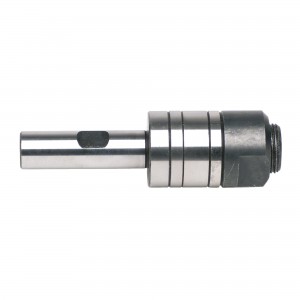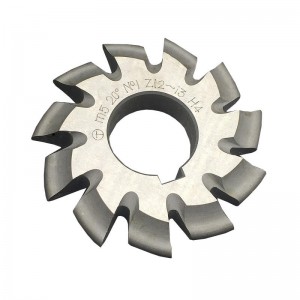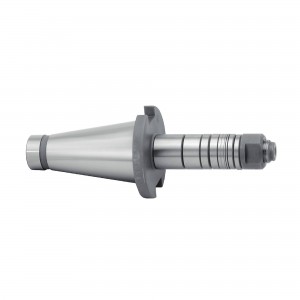1. HRA
*Testing Method and Principle:
-The HRA hardness test uses a diamond cone indenter, pressed into the material surface under a 60 kg load. The hardness value is determined by measuring the depth of the indentation.
*Applicable Material Types:
-Mainly suitable for very hard materials, such as cemented carbides, thin steel, and hard coatings.
*Common Application Scenarios:
-Quality control and hardness testing of cemented carbide tools, including solid carbide twist drills.
-Hardness testing of hard coatings and surface treatments.
-Industrial applications involving very hard materials.
*Features and Advantages:
-Suitable for Very Hard Materials: The HRA scale is particularly suitable for measuring the hardness of very hard materials, providing accurate test results.
-High Precision: The diamond cone indenter provides precise and consistent measurements.
-High Repeatability: The test method ensures stable and repeatable results.
*Considerations or Limitations:
-Sample Preparation: The sample surface must be smooth and clean to ensure accurate results.
-Equipment Maintenance: Regular calibration and maintenance of testing equipment are necessary to ensure accuracy and reliability.
2. HRB
*Testing Method and Principle:
-The HRB hardness test uses a 1/16 inch steel ball indenter, pressed into the material surface under a 100 kg load. The hardness value is determined by measuring the depth of the indentation.
*Applicable Material Types:
-Mainly suitable for softer metals, such as aluminum, copper, and softer steels.
*Common Application Scenarios:
-Quality control and hardness testing of non-ferrous metals and softer steel products.
-Hardness testing of plastic products.
-Material testing in various manufacturing processes.
*Features and Advantages:
-Suitable for Soft Metals: The HRB scale is particularly suitable for measuring the hardness of softer metals, providing accurate test results.
-Moderate Load: Uses a moderate load (100 kg) to avoid excessive indentation in soft materials.
-High Repeatability: The steel ball indenter provides stable and repeatable test results.
*Considerations or Limitations:
-Sample Preparation: The sample surface must be smooth and clean to ensure accurate results.
-Material Limitation: Not suitable for very hard materials, like solid carbide twist drills, as the steel ball indenter may get damaged or produce inaccurate results.
-Equipment Maintenance: Regular calibration and maintenance of testing equipment are necessary to ensure accuracy and reliability.
- 3. HRC
*Testing Method and Principle:
-The HRC hardness test uses a diamond cone indenter, pressed into the material surface under a 150 kg load. The hardness value is determined by measuring the depth of the indentation.
*Applicable Material Types:
-Mainly suitable for harder steels and hard alloys.
*Common Application Scenarios:
-Quality control and hardness testing of hardened steels, such as solid carbide twist drills and tool steels.
-Hardness testing of hard castings and forgings.
-Industrial applications involving hard materials.
*Features and Advantages:
-Suitable for Hard Materials: The HRC scale is particularly suitable for measuring the hardness of hard steels and alloys, providing accurate test results.
-High Load: Uses a higher load (150 kg), suitable for higher hardness materials.
-High Repeatability: The diamond cone indenter provides stable and repeatable test results.
*Considerations or Limitations:
-Sample Preparation: The sample surface must be smooth and clean to ensure accurate results.
-Material Limitation: Not suitable for very soft materials as the higher load may cause excessive indentation.
-Equipment Maintenance: Regular calibration and maintenance of testing equipment are necessary to ensure accuracy and reliability.
4.HRD
*Testing Method and Principle:
-The HRD hardness test uses a diamond cone indenter, pressed into the material surface under a 100 kg load. The hardness value is determined by measuring the depth of the indentation.
*Applicable Material Types:
-Mainly suitable for hard metals and hard alloys.
*Common Application Scenarios:
-Quality control and hardness testing of hard metals and alloys.
-Hardness testing of tools and mechanical parts.
-Industrial applications involving hard materials.
*Features and Advantages:
-Suitable for Hard Materials: The HRD scale is particularly suitable for measuring the hardness of hard metals and alloys, providing accurate test results.
-High Precision: The diamond cone indenter provides precise and consistent measurements.
-High Repeatability: The test method ensures stable and repeatable results.
*Considerations or Limitations:
-Sample Preparation: The sample surface must be smooth and clean to ensure accurate results.
-Material Limitation: Not suitable for very soft materials as the higher load may cause excessive indentation.
-Equipment Maintenance: Regular calibration and maintenance of testing equipment are necessary to ensure accuracy and reliability.
5.HRH
*Testing Method and Principle:
-The HRH hardness test uses a 1/8 inch steel ball indenter, pressed into the material surface under a 60 kg load. The hardness value is determined by measuring the depth of the indentation.
*Applicable Material Types:
-Mainly suitable for softer metal materials, such as aluminum, copper, lead alloys, and certain non-ferrous metals.
*Common Application Scenarios:
-Quality control and hardness testing of light metals and alloys.
-Hardness testing of cast aluminum and die-cast parts.
-Material testing in the electrical and electronic industries.
*Features and Advantages:
-Suitable for Soft Materials: The HRH scale is particularly suitable for measuring the hardness of softer metal materials, providing accurate test results.
-Lower Load: Uses a lower load (60 kg) to avoid excessive indentation in soft materials.
-High Repeatability: The steel ball indenter provides stable and repeatable test results.
*Considerations or Limitations:
-Sample Preparation: The sample surface must be smooth and clean to ensure accurate results.
-Material Limitation: Not suitable for very hard materials, like solid carbide twist drills, as the steel ball indenter may get damaged or produce inaccurate results.
-Equipment Maintenance: Regular calibration and maintenance of testing equipment are necessary to ensure accuracy and reliability.
6.HRK
*Testing Method and Principle:
-The HRK hardness test uses a 1/8 inch steel ball indenter, pressed into the material surface under a 150 kg load. The hardness value is determined by measuring the depth of the indentation.
*Applicable Material Types:
-Mainly suitable for medium-hard to harder metal materials, such as certain steels, cast iron, and hard alloys.
*Common Application Scenarios:
-Quality control and hardness testing of steel and cast iron.
-Hardness testing of tools and mechanical parts.
-Industrial applications for medium to high hardness materials.
*Features and Advantages:
-Wide Applicability: The HRK scale is suitable for medium-hard to harder metal materials, providing accurate test results.
-High Load: Uses a higher load (150 kg), suitable for higher hardness materials.
-High Repeatability: The steel ball indenter provides stable and repeatable test results.
*Considerations or Limitations:
-Sample Preparation: The sample surface must be smooth and clean to ensure accurate results.
-Material Limitation: Not suitable for very soft materials as the higher load may cause excessive indentation.
-Equipment Maintenance: Regular calibration and maintenance of testing equipment are necessary to ensure accuracy and reliability.
7.HRL
*Testing Method and Principle:
-The HRL hardness test uses a 1/4 inch steel ball indenter, pressed into the material surface under a 60 kg load. The hardness value is determined by measuring the depth of the indentation.
*Applicable Material Types:
-Mainly suitable for softer metal materials and certain plastics, such as aluminum, copper, lead alloys, and certain lower hardness plastic materials.
*Common Application Scenarios:
-Quality control and hardness testing of light metals and alloys.
-Hardness testing of plastic products and parts.
-Material testing in the electrical and electronic industries.
*Features and Advantages:
-Suitable for Soft Materials: The HRL scale is particularly suitable for measuring the hardness of softer metal and plastic materials, providing accurate test results.
-Low Load: Uses a lower load (60 kg) to avoid excessive indentation in soft materials.
-High Repeatability: The steel ball indenter provides stable and repeatable test results.
*Considerations or Limitations:
-Sample Preparation: The sample surface must be smooth and clean to ensure accurate results.
-Material Limitation: Not suitable for very hard materials, like solid carbide twist drills, as the steel ball indenter may get damaged or produce inaccurate results.
-Equipment Maintenance: Regular calibration and maintenance of testing equipment are necessary to ensure accuracy and reliability.
8.HRM
*Testing Method and Principle:
-The HRM hardness test uses a 1/4 inch steel ball indenter, pressed into the material surface under a 100 kg load. The hardness value is determined by measuring the depth of the indentation.
*Applicable Material Types:
-Mainly suitable for medium-hard metal materials and certain plastics, such as aluminum, copper, lead alloys, and medium hardness plastic materials.
*Common Application Scenarios:
-Quality control and hardness testing of light to medium hardness metals and alloys.
-Hardness testing of plastic products and parts.
-Material testing in the electrical and electronic industries.
*Features and Advantages:
-Suitable for Medium-Hard Materials: The HRM scale is particularly suitable for measuring the hardness of medium-hard metal and plastic materials, providing accurate test results.
-Moderate Load: Uses a moderate load (100 kg) to avoid excessive indentation in medium-hard materials.
-High Repeatability: The steel ball indenter provides stable and repeatable test results.
*Considerations or Limitations:
-Sample Preparation: The sample surface must be smooth and clean to ensure accurate results.
-Material Limitation: Not suitable for very hard materials, like solid carbide twist drills, as the steel ball indenter may get damaged or produce inaccurate results.
-Equipment Maintenance: Regular calibration and maintenance of testing equipment are necessary to ensure accuracy and reliability.
9.HRR
*Testing Method and Principle:
-The HRR hardness test uses a 1/2 inch steel ball indenter, pressed into the material surface under a 60 kg load. The hardness value is determined by measuring the depth of the indentation.
*Applicable Material Types:
-Mainly suitable for softer metal materials and certain plastics, such as aluminum, copper, lead alloys, and lower hardness plastic materials.
*Common Application Scenarios:
-Quality control and hardness testing of light metals and alloys.
-Hardness testing of plastic products and parts.
-Material testing in the electrical and electronic industries.
*Features and Advantages:
-Suitable for Soft Materials: The HRR scale is particularly suitable for measuring the hardness of softer metal and plastic materials, providing accurate test results.
-Lower Load: Uses a lower load (60 kg) to avoid excessive indentation in soft materials.
-High Repeatability: The steel ball indenter provides stable and repeatable test results.
*Considerations or Limitations:
-Sample Preparation: The sample surface must be smooth and clean to ensure accurate results.
-Material Limitation: Not suitable for very hard materials, like solid carbide twist drills, as the steel ball indenter may get damaged or produce inaccurate results.
-Equipment Maintenance: Regular calibration and maintenance of testing equipment are necessary to ensure accuracy and reliability.
10.HRG
*Testing Method and Principle:
-The HRG hardness test uses a 1/2 inch steel ball indenter, pressed into the material surface under a 150 kg load. The hardness value is determined by measuring the depth of the indentation.
*Applicable Material Types:
-Mainly suitable for harder metal materials, such as certain steels, cast iron, and hard alloys.
*Common Application Scenarios:
-Quality control and hardness testing of steel and cast iron.
-Hardness testing of tools and mechanical parts, including solid carbide twist drills.
-Industrial applications for higher hardness materials.
*Features and Advantages:
-Wide Applicability: The HRG scale is suitable for harder metal materials, providing accurate test results.
-High Load: Uses a higher load (150 kg), suitable for higher hardness materials.
-High Repeatability: The steel ball indenter provides stable and repeatable test results.
*Considerations or Limitations:
-Sample Preparation: The sample surface must be smooth and clean to ensure accurate results.
-Material Limitation: Not suitable for very soft materials as the higher load may cause excessive indentation.
-Equipment Maintenance: Regular calibration and maintenance of testing equipment are necessary to ensure accuracy and reliability.
Conclusion
The Rockwell hardness scales encompass various methods for testing the hardness of different materials, from very soft to very hard. Each scale uses different indenters and loads to measure the depth of the indentation, providing accurate and repeatable results suitable for quality control, manufacturing, and material testing across diverse industries. Regular equipment maintenance and proper sample preparation are essential for ensuring reliable hardness measurements. For example, solid carbide twist drills, which are typically very hard, are best tested using the HRA or HRC scales to ensure precise and consistent hardness measurements.
Contact: jason@wayleading.com
Whatsapp: +8613666269798
Recommended Products
Recommended Products
Post time: Jun-24-2024







